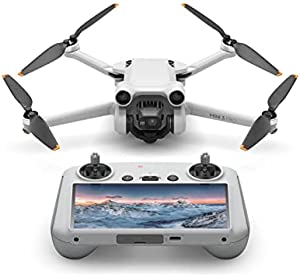Magnetic building blocks have become increasingly popular as a toy for children's brain development. These blocks are designed to help children develop their creativity, problem-solving skills, and spatial reasoning abilities. In this article, we'll explore what magnetic building blocks are, how they work, and the benefits and drawbacks of using them.

What Are Magnetic Building Blocks?

Magnetic building blocks are a type of construction set that uses magnets to connect different pieces together. These sets usually come with various shapes and sizes of magnetic pieces that can be connected in different ways to create structures and objects. The magnets allow the pieces to stick together easily, so children don't have to worry about the blocks falling apart as they build.
Some popular brands of magnetic building blocks include Magformers, PicassoTiles, and Tegu. Each of these brands has its unique features and designs, but they all work on the same basic principle of magnetism.
Summary:
- Magnetic building blocks use magnets to connect different pieces together.
- Popular brands include Magformers, PicassoTiles, and Tegu.
Who Can Benefit from Magnetic Building Blocks?

Magnetic building blocks are suitable for children of all ages, although they are particularly useful for young children who are just starting to develop their spatial reasoning skills. They can be used in a variety of settings, including at home, in school, or in daycare centers.
Children who enjoy building with blocks or Legos will likely enjoy playing with magnetic building blocks. They can be used to create a wide range of structures and objects, from simple geometric shapes to more complex designs like castles, vehicles, and robots.
Summary:
- Magnetic building blocks are suitable for children of all ages, but particularly useful for young children developing their spatial reasoning skills.
- They can be used in a variety of settings, including at home, in school, or in daycare centers.
- Children who enjoy building with blocks or Legos will likely enjoy playing with magnetic building blocks.
What Are the Pros and Cons of Magnetic Building Blocks?

Like any toy or educational tool, there are both advantages and disadvantages to using magnetic building blocks. Here are some of the most significant pros and cons:
Pros
- Promote creativity and imagination: Magnetic building blocks allow children to create their own designs and structures, which can help develop their creativity and imagination.
- Develop problem-solving skills: As children build with magnetic blocks, they must figure out how to fit the different shapes together, developing their problem-solving skills.
- Encourage spatial reasoning: Magnetic building blocks require children to think about spatial relationships between objects and how they fit together, helping them develop their spatial reasoning abilities.
- Easy to use: The magnets make it easy for children to connect the pieces without worrying about them falling apart.
Cons
- Expensive: Magnetic building block sets can be more costly than traditional blocks or Legos.
- Limited design possibilities: While children can create many different structures with magnetic blocks, the available shapes and sizes may be limiting compared to other building toys.
- Magnets can be a choking hazard: Young children who put toys in their mouths may accidentally swallow the small magnets, which can be dangerous.
Summary:
- Pros of magnetic building blocks include promoting creativity and imagination, developing problem-solving skills, encouraging spatial reasoning, and being easy to use.
- Cons of magnetic building blocks include being expensive, having limited design possibilities, and presenting a choking hazard for young children.
How to Use Magnetic Building Blocks
Using magnetic building blocks is relatively simple, but there are a few tips to keep in mind:
- Begin with simple shapes: Start by creating basic geometric shapes like squares and triangles to get used to how the pieces connect.
- Experiment with different connections: Try connecting pieces in different ways to create unique designs.
- Use sets with a variety of shapes and sizes: This will allow for more complex structures and designs.
- Encourage creativity: Let children explore their imagination and come up with their own designs.
Summary:
- To use magnetic building blocks, start with simple shapes, experiment with different connections, use sets with a variety of shapes and sizes, and encourage creativity.
Alternatives to Magnetic Building Blocks
While magnetic building blocks are an excellent educational toy for children, there are several other options available:
- Traditional wooden blocks: Wooden blocks are a classic toy that can help children develop similar skills as magnetic blocks, such as spatial reasoning and problem-solving.
- Legos: Legos offer a wide range of shapes and sizes, allowing for more complex designs than magnetic blocks.
- Marble runs: Marble runs involve building tracks and obstacles for marbles to roll through, which can help develop problem-solving skills and spatial reasoning.
Summary:
- Alternatives to magnetic building blocks include traditional wooden blocks, Legos, and marble runs.
Step-by-Step Guide: How to Clean Magnetic Building Blocks
Keeping your child's toys clean is essential for their health and safety. Here's a step-by-step guide on how to clean magnetic building blocks:
- Remove any visible dirt or debris from the blocks by wiping them down with a dry cloth.
- Fill a large bowl with warm water and a small amount of mild dish soap.
- Place the blocks in the soapy water and let them soak for 10-15 minutes.
- Use a soft-bristled brush or sponge to gently scrub the blocks, paying particular attention to any areas where dirt or grime may have accumulated.
- Rinse the blocks thoroughly with clean water to remove any remaining soap residue.
- Dry the blocks with a clean towel or let them air-dry before storing them away.
Summary:
- To clean magnetic building blocks, remove any visible dirt or debris, soak the blocks in warm soapy water, gently scrub with a soft-bristled brush or sponge, rinse thoroughly with clean water, and dry with a clean towel or let them air-dry.
Comparison: Magnetic Building Blocks vs. Traditional Blocks
Magnetic building blocks share many similarities with traditional blocks, but there are some key differences to consider:
Magnetic Building Blocks
- Use magnets to connect pieces.
- Limited range of shapes and sizes compared to traditional blocks.
- Higher cost than traditional blocks.
- Encourage spatial reasoning and problem-solving skills.
Traditional Blocks
- Use friction or gravity to connect pieces.
- Wide range of shapes and sizes available.
- Lower cost than magnetic blocks.
- Also encourage spatial reasoning and problem-solving skills.
Ultimately, the choice between magnetic building blocks and traditional blocks comes down to personal preference and budget.
Summary:
- Magnetic building blocks use magnets to connect pieces, have a limited range of shapes and sizes, are more expensive, and encourage spatial reasoning and problem-solving skills.
- Traditional blocks use friction or gravity to connect pieces, have a wide range of shapes and sizes available, are less expensive, and also encourage spatial reasoning and problem-solving skills.
Tips for Getting the Most Out of Magnetic Building Blocks
Here are some tips for maximizing your child's learning with magnetic building blocks:
- Use them regularly: Encourage your child to play with magnetic building blocks frequently to help develop their skills.
- Combine sets: Combining different sets of magnetic building blocks can expand the range of shapes and sizes available.
- Play together: Sit down and play with your child to offer guidance and encouragement while they build.
- Set challenges: Challenge your child to create specific structures or objects, such as a bridge or a tower.
- Take photos: Take photos of your child's creations to celebrate their achievements and track their progress over time.
Summary:
- To get the most out of magnetic building blocks, use them regularly, combine sets, play together, set challenges, and take photos.
The Best Magnetic Building Block Sets for Kids in 2023
There are many great options when it comes to choosing a magnetic building block set for your child. Here are some of the best sets available in 2023:
- Magformers Neon 30-Piece Set: This brightly colored set includes triangles, squares, and pentagons for endless building possibilities.
- PicassoTiles 100 Piece Set: With 100 pieces in various shapes and sizes, this set provides plenty of options for creating larger structures.
- Tegu Magnetic Wooden Blocks: This unique set combines the benefits of magnetic and traditional wooden blocks for a more tactile building experience.
Summary:
- Some of the best magnetic building block sets for kids in 2023 include the Magformers Neon 30-Piece Set, PicassoTiles 100 Piece Set, and Tegu Magnetic Wooden Blocks.
FAQs about Magnetic Building Blocks
- Are magnetic building blocks safe for children?
- As long as they are used properly and kept away from young children who may put them in their mouths, magnetic building blocks are generally considered safe.
- At what age can children start using magnetic building blocks?
- Magnetic building blocks can be used by children of all ages, although they are particularly useful for young children developing their spatial reasoning skills.
- Can magnetic building blocks be combined with other building toys?
- Yes, magnetic building blocks can be combined with other building toys to expand the range of shapes and sizes available.
- Do magnetic building blocks come with instructions or ideas for building?
- Many magnetic building block sets come with idea booklets or online resources with instructions for building specific structures and objects.
- How do you know if a magnetic building block is high quality?
- Look for sets made with high-quality materials and strong magnets that hold the pieces together securely.
Summary:
- FAQs about magnetic building blocks include questions about safety, age appropriateness, compatibility with other toys, instructions for building, and quality indicators.
Conclusion
Magnetic building blocks are an excellent


